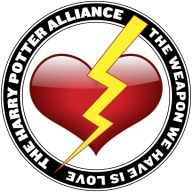July 20, 2011
The Story that Lives
Did you sense it? This past weekend marked the end of an era. I admit I didn’t notice at first. But as I sat around the kitchen table with our convent/farm interns last Thursday night, I began to realize that the release of Harry Potter and the Deathly Hallows Part 2 – the final episode of the seven book story – was a big deal.
Over dinner the interns and I started discussing our weekend plans: watching HP 7 Part 1 again at home on Saturday, then heading to the theatre Sunday evening for the new movie. Shannon, a 22 year old Episcopalian from Minnesota, discussed menu options for Potterfest: butterbeer, pumpkin pasties, and treacle tart. She’s hosted parties for all the previous movie releases, becoming an expert cook of magical food. I took delight in the anticipation and activities they described.
But my interest was piqued in a new way when Shannon began describing this moment as “the end of an era.” She was 10 years old when Harry started at Hogwarts school at age 11. Shannon was 17 when Harry’s quest climaxed at age 18, altering his magical world forever. It altered Shannon’s world as well. This is, literally, the story of a generation.
When I was reading the books, in my 30s, I wondered aloud to friends what difference this story would make to a younger generation. What would it mean to read about kids one’s own age defying authority and advocating for the rights and dignity of others against puritanical doctrine? What would it feel like to read of classmates whose parents had been tortured? What impact would it make to realize your peers were literally taking up arms (wands) and willing to sacrifice their lives for the people they loved, struggling to rid their world of evil and needless suffering?
 It has made an impact, at least for some. Shannon told me about the Harry Potter Alliance, with its wonderful slogan “The weapon we have is love.” Using the combined power of social media, popular culture, and activism, this alliance has enlisted over 100,000 people and 60 chapters around the world. For the last nine months, between the release of the final two movies, they’ve been running the Deathly Hallows Campaign “to destroy seven real world horcruxes:” child slavery, illiteracy, bullying, dementors (such as anxiety and depression), starvation wages, body binding (such as negative body image and poor health), and the climate crisis.
It has made an impact, at least for some. Shannon told me about the Harry Potter Alliance, with its wonderful slogan “The weapon we have is love.” Using the combined power of social media, popular culture, and activism, this alliance has enlisted over 100,000 people and 60 chapters around the world. For the last nine months, between the release of the final two movies, they’ve been running the Deathly Hallows Campaign “to destroy seven real world horcruxes:” child slavery, illiteracy, bullying, dementors (such as anxiety and depression), starvation wages, body binding (such as negative body image and poor health), and the climate crisis.
Last weekend I experienced what Jason Sierra wrote about in Vestry Papers this month – the diaconate of young adulthood. During dinner at the convent/farm, the youngest among us was serving a diaconal role: “interpreting to the Church the needs, concerns, and hopes of the world.” Not only was Shannon doing an interpretive riff on Harry Potter, but she was trying to integrate its meaning with the contemporary theology, science, psychology, environmental issues and scripture that are part of daily study and prayer at the convent/farm. Shannon helped me begin to see the world differently than I had before, through the lens of a different generation.
I seized the moment by asking Shannon to take my preaching slot on Sunday. This was an opportunity to have a young member of our church help us to translate the world to the church, and vise versa.
This experience also reminded me how influential pop culture is to most of us. Unfortunately it can cause separation among generations if we don’t “get” each other’s cultural references or shifting values. But with some work – using good translators and diaconal opportunities – we can better bridge our gaps, and hopefully enrich our lives through the exchange.
Thankfully, we have another story to share together: the Gospel and the story of God’s people from generation to generation. We haven’t reached the end of that story.





